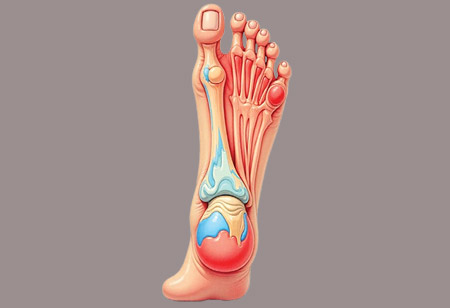Thank you for Subscribing to Healthcare Business Review Weekly Brief

Revolutionizing Podiatry for Efficient Patient Care
Healthcare Business Review
Please comment on your current role and responsibility at Wyckoff Heights Medical Center.
As the director of podiatric medical education and co-chief of the podiatry division, I lead certified residency and fellowship training in wound care along with our parent organization, Council on Podiatric Medical Education. We are a renowned healthcare organization specializing in podiatry and a broad range of primary care and specialty services.
I am involved in lectures pertaining to diabetes and wound care for aspiring podiatrists. I continuously learn from journals and trade publications to keep abreast of the competition. Our capitalist system allows entrepreneurs to benefit from leveraging advanced wound care technologies. We act as a good driving force to innovate wound care devices, pharmaceuticals, and treatments that are substantially beneficial to patients and financially compensating.
How do you see new developments in wound care from a technology standpoint?
Wound care is a super-exciting area of interest, continuing to expand with the development of technologies in the diagnosis and treatment of wounds. People with chronic diseases like diabetes are a subset of podiatric patients. Podiatric care involves using biological indicators and biomarkers to externally recognize patients' actual areas of infections and reduce risks. Nanotechnology has vast applications to aid in the wound microenvironment through antimicrobial and anti-inflammatory effects. Besides, thermal imaging and shear force detection techniques are being developed to detect whether a wound needs extra management to improve chronic wound care and support healing.
Is there any project or initiative you are currently overseeing in the podiatry landscape that you would want to share?
As far as wound care is concerned, we are actively working on topical oxygen wound therapy (TOWT), where an open wound is directly controlled by applying 100 percent oxygen at above-normal atmospheric pressure.
Recently, American Diabetes Association (ADA) has certified TOWT as one of the recommended adjunct therapies to treat diabetic ulcers. This is fascinating because hyperbaric oxygen therapy has been established as a gold standard for wound care for many decades to speed up wound healing and infections in tissues using oxygen. While there is no supportive evidence to prove TOWT's benefits, advancements in medical technologies and research are paving the way for attaining real-world evidence through clinical studies, expert panel discussions, and ADA certifications.
We act as a good driving force to innovate wound care devices, pharmaceuticals, and treatments that are substantially beneficial to patients and financially compensating.
Another area of focus is novel measurement devices for critical wounds. Wounds, by nature, are very irregular, and measuring their length, width, and depth is essential to predict their criticality. While standard and archaic ruler type is mostly inaccurate in measuring the wound depth, it is possible to visualize and track the wound improvement on a weekly basis using its length and width.
Do you observe any pattern of misconceptions pertaining to wound care and treatment when talking to students or professionals in the podiatry space?
A lot of misconceptions come from a lack of adequate subject-matter expertise and experience. Each podiatrist and student believes certain things yet may not know their pitfalls. After allowing them to learn and accumulate the know-how, they critically evaluate every aspect and realize the value. We must not just offhandedly pretend everything is wrong and different than one's paradigm and beliefs. It never exactly helps us gain any additional knowledge or accept something that might be useful. Especially with younger generations, it is not just a matter of their youth, but a matter of their experience and understanding.
What would be your single piece of advice to an aspiring professional in your field?
One thing in podiatry is that there are various hospital-based and multi-practice-based positions available that pay much better. You must be aware of trying to get yourself into a role where you can be well compensated and make a tangible impact. What is even more important is a good work-life balance and willingness to work hard and learn from your mentors during training.
It becomes very important to continue seeking excellence and self-education on industry-wide aspects. While it may seem burdensome, it is actually empowering and energizing. If you don't do that, you will lose your love for it. Stay ahead of the learning curve, chase new goals and challenges, and continually reinvent and recreate yourself.
We try to empower medical professionals and motivate them as much as possible to keep them happy both in their personal and professional lives. You ensure you never leave any stone unturned when it comes to patient care. The bottom line is to ensure you never lose sight of yourselves and patients who are always looking for your integral service.









